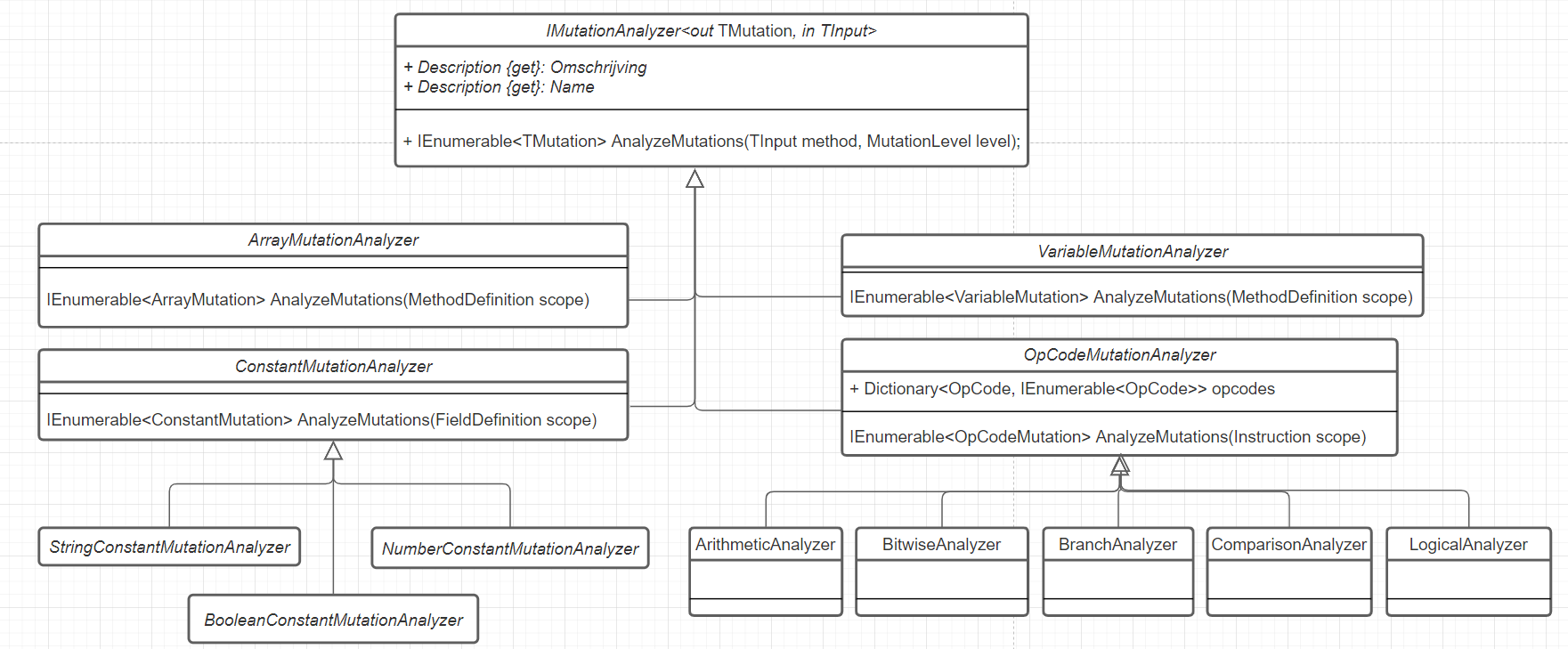Analyzers
An analyzer looks at the bytecode, checks what kind of mutations can take place,
and returns the possible mutations (see next section) to the caller.
An analyzer has two generics: TMutation and TInput.
TMutation is the mutation type which contains metadata about the possible mutation and can execute and/or undo itself.
TInput is the scope where the mutation check will be made.
The scope is a type of Mono.Cecil and can for example be a Method/FieldDefinition or Instruction.
- In the case of opcode mutations, the scope is an 'Instruction' (e.g. return 1 + 1) ,
- in the case of an array mutation, the scope is a 'Method Definition',
- in the case of a constant field mutation, the scope is a 'FieldDefinition'.
Mutation Level: This level determines what mutations are executed during a test run.
OpCode Mutation Analyzer
This mutation analyzer looks at what possible mutations there are in the opcode of an instruction.
An instruction is a statement like 'a = 1 + 2'.
On this instruction the '+' can be changed to '-, /, *, %'.
There are 4 different opcode mutation analyzers.
Namely an analyzer for arithmetic operations (/, *), bitwise operations (^, |), branch (if) operations and comparison operations (<, >).
For many opcodes, one or more mutations are possible, therefore an 'IEnumerable
Constant Mutation Analyzer
This mutation analyzer looks at what possible mutations can be performed on a constant field. There are different types of constant fields with different ways of mutation. An integer can be mutated with a random number, a string with a random string and a boolean should be inverted.
Array Mutation Analyzer
This mutation analyzer looks at the possible mutations on arrays in a method body. There are different arrays, different ways to declare and modify them. An array can be:
- Modified
- Emptied
- Resized
There are:
- Arrays passed as parameters
- Inline initialized arrays (
new {1, 2, 3 }) - Index initialized arrays
- Index changes
Variable Analyzer
The variable analyzer is able to mutate literal variables such as false to true, 1 to 2 etc..
